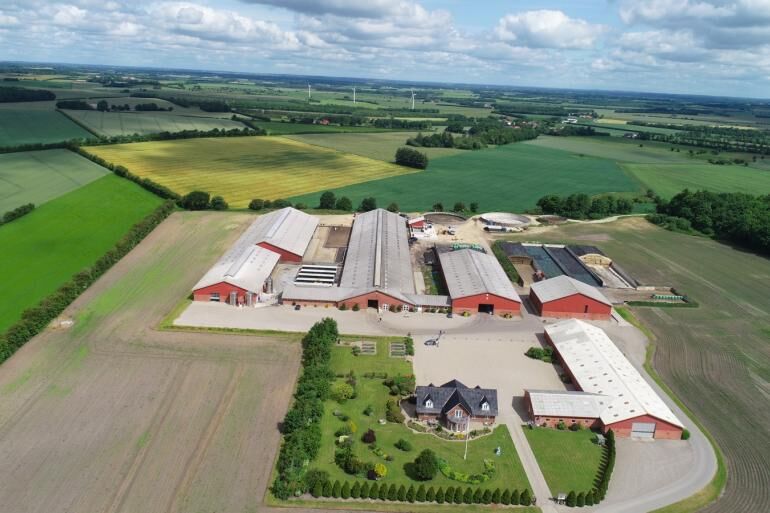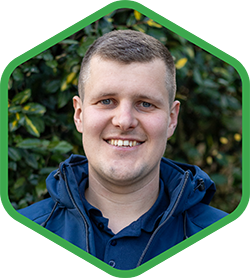From a bankrupt estate to a solid organized company
The familiy Cornelissen sold their farm and land in The Netherlands and emigrated to Denmark in 2014. During an internship abroad, MAS student René Cornelissen became acquainted with Danish dairy farming. He then regularly traveled to the country to gain work experience and saw opportunities for a future as a farmer. That is how he ended up on Bølkhøj farm. It was 2014 and crisis in Danish dairy farming. This company was genualy bankrupt and owned by a bank. They offered it for sale to the young Dutchman.
The Cornelissen family now milks 715 cows with an average production of over 12,500 kg EKM (fat corrected milk). The latest addition is the sand washer that separates sand and manure. In the video below, René Cornelissen explains why they chose this sand solution from Mavasol.
The expectation is that the new sandseparation system will save 60,000 kg of CO2 annually. This is based on 715 dairy cows and 15 kg of sand per day, per cow.
Benefits of the sandseparation system according René:
- Better resistance of the cow, less infections and health problems
- We supply the manure to the biogas plant with a profitable result
- We have considerably less transport costs
- We can reuse the sand
- Sand recovery of approx. 91%
- We can keep manure storage clean of sand
- Return on investment within 4 - 5 years
- Annual savings of € 80,000, including revenues from biogas supply
A flying start for the Cornelissen family in Denmark
The first crisis in Danish dairy farming was in 2014. Many companies ran into problems due to a combination of high financing costs and falling land prices. A large number of companies were sold or taken over by banks in anticipation of better times. "This company was also owned by the bank and the staff of the previous owner was running it." says René. "When the manager indicated that he wanted to leave, I was offered to take over the company. My parents and I saw an opportunity and decided to sell our farm in the Netherlands to continue farming here in Denmark."
When the keys were handed over in June 2014, 380 cows were milked at Bølkhøj and the majority of the 450 young stock were kept at a second location. "Milk production was actually quite good with 9500 kg EMK (energy-corrected milk). But an average of 12 kg of concentrates was fed per cow. And the replacement percentage was 45 percent." The dairy farmer explains the situation in which he started. In the first year, it was possible to drastically reduce the amount of concentrate while keeping production at the same level. The replacement percentage also went down step by step and is now around 25 percent.
At the same time, business development got off to a flying start. The barn was full and the cows were milked in an outdated 2 x 8 milking parlour. "That is why, when we bought the company, we had already taken into account the construction of a barn with 150 cubicles and a new dairy building with a spacious milking barn, waiting and separation area and straw pens for 60 cows. The construction plans had to be completed before the end of the year. Wholly completed, otherwise the environmental permit would expire," says René about the pressure of the first months.
The expansion allowed the herd to gradually grow to its current size of 715 dairy and calf cows. A flock of 60 cows was bought, but otherwise the doubling was realized with our own young stock. Initially, the Bølkhøj company owned 120 hectares of private land and another 450 hectares were rented, partly at great distance. "In the beginning we barely knew how to find some plots. Fortunately, our contractor was very helpful", René recalls the hectic first months. Incidentally, he soon decided to dispose of the rental land that was far from home. “That immediately gave me more peace of mind,” he says.
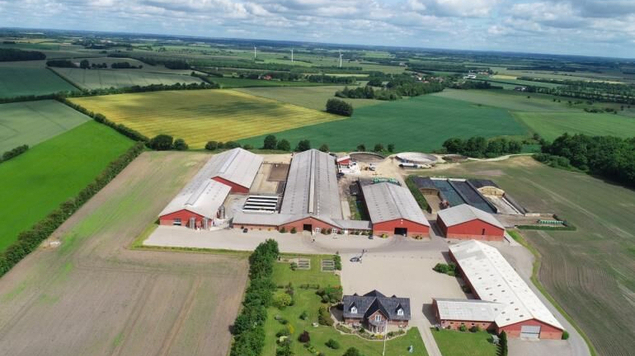
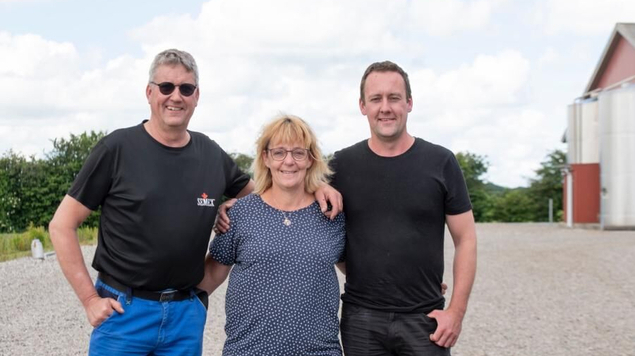
Contractor fills in construction plan
The Cornelissen family now has approximately 500 hectares of land that is used for the cultivation of grass, corn and grains. "Until last year, we did a lot of land work ourselves. In order to get more peace of mind in our business operations, we decided last year to dispose of the machinery and to outsource the entire fodder cultivation and forage harvesting," says René. To be assured of sufficient roughage of good quality, the entrepreneur has concluded a five-year contract with his regular contractor. "He makes a joint construction plan for our land and his own land and bears full responsibility for the cultivation. We plan the fodder production in consultation." They have agreed on a fixed distribution key for the settlement of costs and revenues. The yield and quality of the crops are the basis for this. "At the harvest, every load of feed goes over the weighbridge, so that we know exactly what comes from the land. And the silage is sampled to determine the nutritional value. As a result, the contractor also has a financial interest in the quality of the silage," he declares.
The Cornelissen family pays the contractor a fixed amount every month. At the end of the year, the balance is drawn up and a supplementary payment may follow. "This way we have fewer fluctuations in the liquidity of the company and our bank is also happy with that," René notes.
According to the entrepreneur, the new way of working has more advantages. "By outsourcing cultivation and fodder extraction, we can concentrate on the livestock and the strategic management of the company. And by making long-term agreements, we know where we stand. This also applies to our contract worker, who can invest in machines and personnel on the basis of the agreements."
In addition to machines for feeding and stable work, the Cornelissen family only has seven irrigation installations. But these too are now controlled by an employee of the contractor, who has a day job to keep fifteen installations – including those of the contractor – running. "Irrigation is actually standard here. We start in the spring in the grass and in the course of the summer we move to the maize. Not irrigating is not an option. That costs a lot of nutritional value and that counts heavily in the feed balance," explains Rene. "In the Netherlands we are used to irrigate when it becomes too dry, but then you're always too late."
Strategic choice for the sandseparator
In recent years, the Cornelissen family works together with the 'advisory board' for the strategic plan of the farm. Four times a year, René meets with an advisory board that thinks along with him about strategic development. In addition to his bookkeeper, feed advisor and insurance broker, this council includes an independent advisor from outside agriculture. "He thinks completely different and that leads to heated discussions. Usually after the meeting I first internally scold his ideas for a while. But when that has subsided a bit and I start to think about it, I sometimes come to the conclusion that it might be fitting for our farm. Such a person from outside the sector thinks outside the box and that also gives me fresh, new thoughts that help me move the company forward," says René.
After eight hectic years, Bølkhøj's estate is slowly but surely calming down, although that is relative. For example, when Veeteelt is visiting, technicians are putting the finishing touches to the installation of a sandseparator. This will separate sand from the cubicles and manure. For example, the sand can be reused and the manure can be delivered to a biogas plant. In a video above, René explains the idea behind this investment.
"For the time being, we first have to optimize further and try to reduce the financing burden. In addition, a little more land in ownership would suit us and also the next generation will takeover the company someday" Father and son Cornelissen indicate the plans for the coming years. But in the back of his mind, the young entrepreneur is already thinking one step further. "We are now training one of the employees to become herd manager, so that he can relieve me and replace me," he says. "If we want to milk more cows, we will have to work differently. The past years have taught me that there is a limit to hard work. And that peace of mind helps to make better business decisions".
Collaboration with Mavasol
Years ago René came into contact with Mavasol's advisors. At that time he was in the middle of the transition to sand and the solid floors had recently been poured. In 2021, René contacted Mavasol again to discuss the possibilities of a sand separation system.
During this meeting, the wishes and details were drawn out and the possibilities for reusing sand were discussed. René also expressed his wish to grow to 1100 cows. Based on the discussed package of wishes, a 3D design was made.

Subsequently, a number of ongoing projects in Denmark were visited to give the family a clearer picture of the sandseparation system and the combination with biogas. The acceptance of the supply of manure to the biogas plant also had to be started, in order to determine definitively that the sand could be reused and the manure could be delivered to the biogas plant.
In 2022, the sandwashing system is installed on the Bolkhoj farm and started recycling sand from the stable. At the end of 2022, the system resulted in a sand recovery of 91%.
How does the new sytem work?
Cornelissen's One Shot installation is a complete design with an augur lane, sand lane, DT 360 manure separator and piston pump.
The slurry is scraped from the stables and ends up in the manure gutter. This manure gutter has a slope of 4-6%, so that the manure runs into the manure pit.
The piston pump ensures that the manure is pumped from the manure pit to the One Shot sandseparator. Here the sand-laden fertilizer mixture is blended with recycled water. The One Shot filters the sand from the water-fertilizer and sand mixture.
To ensure that the fine sand is also filtered, the remaining slurry goes along the augur lane, where the last fine sand is filtered out of the manure, resulting in a sand-free manure mixture.
The DT360 separates the water and manure, leaving a dry matter of 6-9% that can be transported to the biogas plant.
Savings
The circular economy and sustainable agriculture are important themes in the Netherlands, but farmers in Denmark must also reduce CO2 emissions, nitrogen and other climate-neutral measures into account.
Circular economy
Basically, a sandseparation system separates sand and manure, so that both products can be reused. The reuse of manure and sand from the stables makes a significant contribution to the circular economy. In addition, the sand retains its value because it does not have to be spread over the land, but is reused. Just like the manure, which is given a new value as a waste product by being upgraded to biogas.
Sustainable agriculture
By reusing the bedding material, less sand is purchased. This ensures considerably less transport for the supply and removal of sand. When manure and sand are blended, it is no longer suitable for the biogas installation. However, when the sand is filtered out of the manure, the remaining dry fertilizer is suitable for use as organic matter in the biogas installation.
René sells his manure to the biogas plant in the region. The manure is frequently collected from him and he benefits for the sale of the biogas. This results in direct savings for the company. On average, 1 cubic meter of manure produces approximately 25 cubic meters of gas, sustainably generated biogas.
It is estimated that the complete system generates an annual saving of €80,000 annually. This amount includes the proceeds from fertilizer supply to the biogas plant.
Health and antibiotics
The health of the cows is the most important thing for the farmer. As René also indicates, the health of his cows has improved considerably. He especially notices the difference in the summer, because many cows suffered from injuries due to the warm weather. In addition, sand is comfortable and provides more grip on the stable floor. The switch to sand has ensured that the Cornelissen family hardly uses any antibiotics anymore.
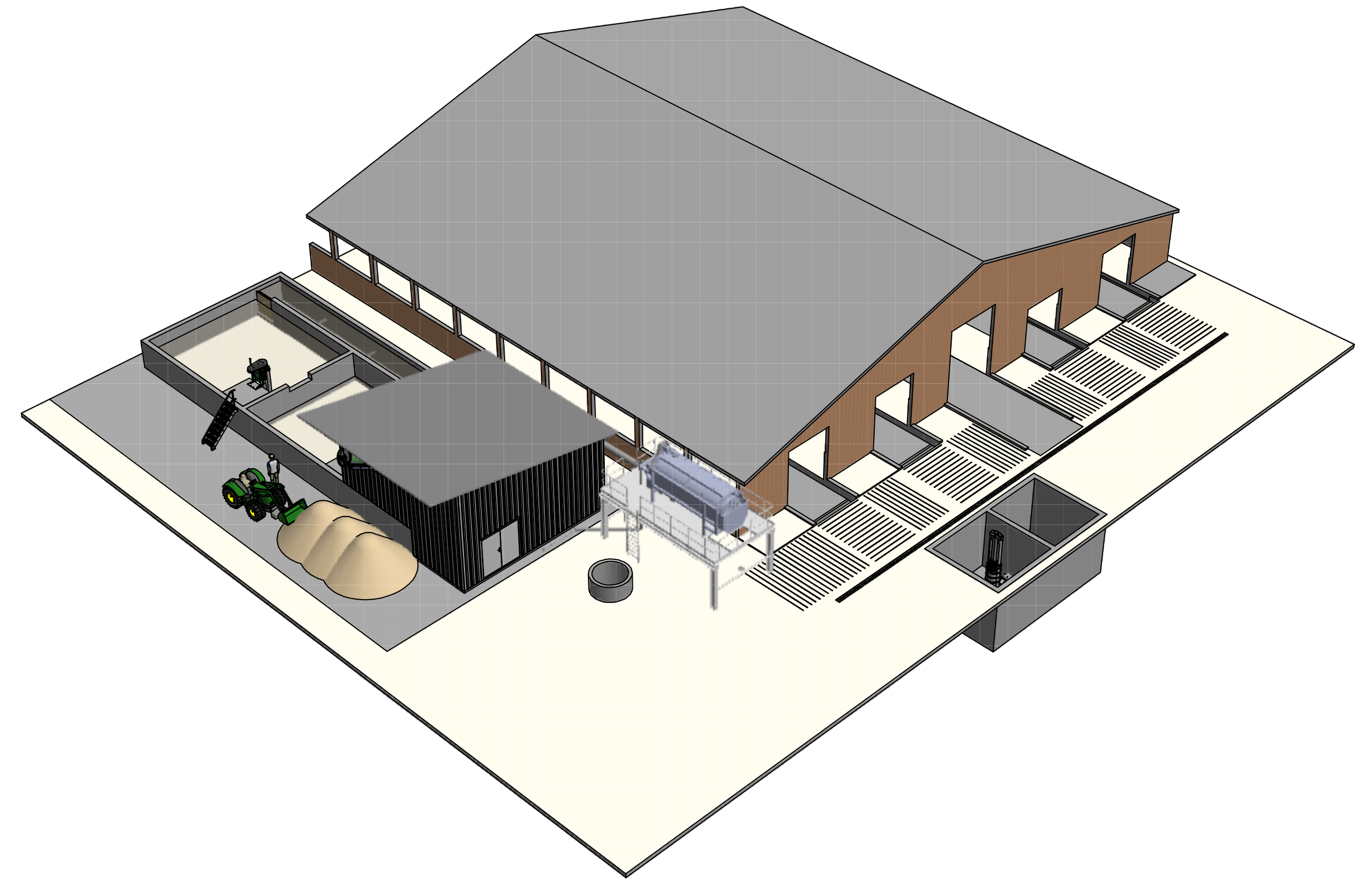
Artikel “Veeteelt”: December 2022



